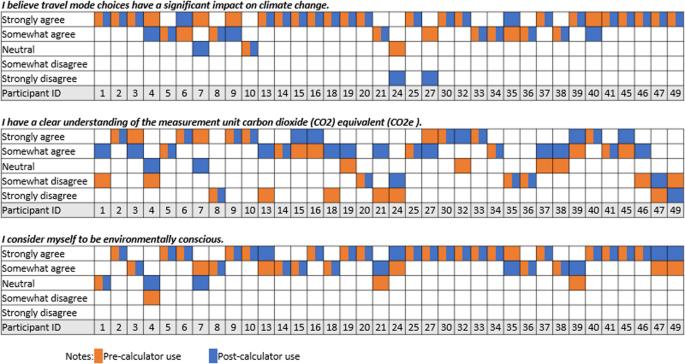Reduced travel emissions through a carbon calculator with accessible environmental data: a case study in Madison, Wisconsin
引用次数: 0
Abstract
The echoing environmental toll of the transportation system calls for a drastic need to move beyond carbon-intensive modes of transportation into more sustainable ones. With the rise of emerging modes of transportation, this transition is more promising than ever. In this work, we take a travel-centric approach to promoting and accelerating the transition away from carbon-intensive modes of transportation by informing travelers about their emissions. A carbon calculator—as a function of trip distance and Well-to-Wheel (WTW) Life Cycle Assessment (LCA)—was developed and embedded on a website platform. Users would input their trip distance, and the calculator outputs the carbon footprint (CO2e) of the trip if it was to be done through seven different modes: car (gasoline), car (hybrid), car (electric), bus, electric bike, bike, and walking. In addition, the calculator outputs the equivalent of CO2e as cheeseburgers for a more intuitive display. The overall goal of this work is to understand how travelers respond to being exposed to carbon footprint information. This serves as a step forward in realizing a sustainable transportation system. We make available the calculator online through this link . Study results indicated that trip distance, environmental awareness, age, income, and mode of transportation used were the most influential features in predicting modal shifts. Importantly, the majority of modal shifts resulted in reduced CO2e emissions.

通过可获取环境数据的碳计算器减少旅行排放:威斯康星州麦迪逊市的案例研究
运输系统对环境造成的巨大损失要求我们摒弃碳密集型运输方式,转而采用更具可持续性的运输方式。随着新兴交通方式的兴起,这种转型比以往任何时候都更有希望。在这项工作中,我们采取了一种以旅行为中心的方法,通过告知旅行者他们的排放量来促进和加快从碳密集型交通方式的转型。我们开发了一个碳计算器--它是旅行距离和WTW(Well-to-Wheel)生命周期评估(LCA)的函数--并嵌入到一个网站平台上。用户输入自己的行程距离,计算器就会输出如果采用汽车(汽油)、汽车(混合动力)、汽车(电动)、公共汽车、电动自行车、自行车和步行等七种不同模式出行的碳足迹(CO2e)。此外,计算器还将二氧化碳当量输出为芝士汉堡,以便更直观地显示。这项工作的总体目标是了解旅行者对碳足迹信息的反应。这为实现可持续交通系统迈出了一步。我们通过此链接在线提供计算器。研究结果表明,旅行距离、环保意识、年龄、收入和使用的交通方式是预测交通方式转变的最有影响力的特征。重要的是,大多数交通方式的转变都减少了二氧化碳排放量。
本文章由计算机程序翻译,如有差异,请以英文原文为准。
求助全文
约1分钟内获得全文
求助全文

 求助内容:
求助内容: 应助结果提醒方式:
应助结果提醒方式:


